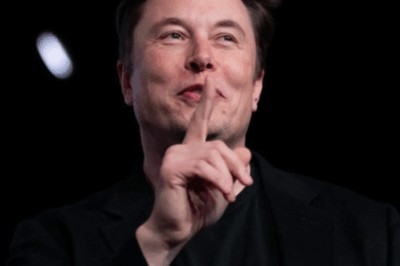Trump’s $5 million gold card was quietly tested: Elon Musk confirms
Billionaire Elon Musk has revealed that the US government is secretly testing the “Trump Gold Card Visa” program – a $5 million immigration card proposed by US President Donald Trump. Although there has been no official announcement, some users have been asked about the visa when accessing the online system, raising questions about the transparency and purpose of the program.
In a tweet on Sunday morning, Elon Musk confirmed that the US government is conducting a “silent test” of the special visa that Mr. Trump has mentioned. Musk wrote: “We are conducting a silent test to make sure the system is working smoothly. When it is complete, there will be an official announcement from the President.”
No details have been given about the format of the test, the scope of the subjects or the verification process. However, Wired magazine reported that some people applying through the Global Entry system have been asked if they have ever applied for a “Trump Card Visa”. This shows that the program is being tested quietly before being widely announced.
The idea of a “golden card” was introduced by Mr. Trump in February 2025, as a new version to replace the EB-5 program – a program that allows foreigners to receive a green card if they invest and create jobs in the US. Currently, the Department of Commerce and the US Immigration Service have not given an official response.

When will the “Trump Gold Card” program be widely deployed?
The answer is still unclear. Elon Musk has only said that it will be announced after testing is complete, but has not given a specific timeline. Previously, Mr. Trump claimed that Congressional approval was not needed and that the cards would be deployed within two weeks – something that did not happen.
On April 10, Commerce Secretary Howard Lutnick said that the Trump administration was preparing to launch the cards in about a week and a half, while affirming that he was “very excited” about the program. In March, Lutnick also said on a podcast that 1,000 gold cards had been sold, according to Wired.
Information about the official implementation roadmap remains vague, causing many controversies and questions about the program’s transparency and feasibility.
When he introduced the program in February, Trump said each gold card would cost about $5 million and would give holders the same benefits as green card holders: the right to live and work legally in the United States, but not to vote or run for office.
Trump stressed that wealthy people who buy the cards will invest heavily in the U.S. economy, spending heavily, paying high taxes, and creating jobs. Revenue from the card sales, he said, would be used to pay down the national debt.
Lutnick also said there would be a rigorous vetting process to ensure that those who receive the cards are “good global citizens.”
Who is the main target of the program?
The issuance of the “gold cards” at a high price raises big questions about the fairness and priority of U.S. immigration policy. The timing of the program’s announcement coincides with Trump’s accelerated efforts to deport illegal immigrants en masse – a campaign pledge.
The Trump administration has had many legal troubles with deportation decisions. One notable case is Kilmar Abrego Garcia – a citizen of Maryland who was wrongly deported, causing the court to order the government to return him to the US. However, Mr. Trump’s side asserted that he did not violate the law and said that the court had no jurisdiction.
This administration has also revoked student visas and asked illegal immigrants to leave voluntarily in exchange for $1,000 in support.
According to what Mr. Trump shared, this program is aimed at the global super-rich – those who are willing to spend millions of dollars in exchange for permanent residency in the US. With the goal of selling one million cards, Mr. Trump expects to collect $5,000 billion – a huge number to contribute to the national budget.
However, experts say this is a new “commercial settlement” model, not much different from the previous EB-5 and still lacks transparency in terms of approval criteria, control of funds, as well as long-term social consequences.
News
Tiger Woods’ son, Charlie Woods, achieves major golf achievement, marking an important milestone in his journey to follow in his father’s footsteps
Tiger Woods’ Son Charlie Woods Earns Major Golf Honor A well-deserved honor for Tiger Woods’ son. ORLANDO, FLORIDA – DECEMBER…
Elon Musk’s fate-deciding meeting of the decade: Either have a chance to become the first trillionaire or leave Tesla forever
Elon Musk’s fate at the Tesla empire will soon be decided. Tesla shareholders could soon give CEO Elon Musk, the…
Niall Horan ‘struggled’ with this aspect of One Direction fame
Though the five One Direction lads looked happy on the outside, they struggled to cope with their drastic rise to fame, which…
Malone continued to gush about his daughter, calling her “f—ing hilarious.
Post Malone Is A Proud Dad, Reflects On Lessons Learned from Raising His 3-Year-Old Daughter And Her Love For George…
Kane Brown shares the results he got after deciding to give up some bad habits!
Kane Brown Quits Tobacco and Alcohol, Drops Over 24 Pounds in Remarkable Health Transformation “Once I realized how tough it…
Lainey Wilson feels like she has “Impostor Syndrome” where the devil always has a way of showing up, wielding his little stick, and stirring things up”
Country Star Lainey Wilson Makes Bold Admission About Her Career: ‘The Devil Has a Way of Coming In’ Lainey Wilson should…
End of content
No more pages to load












